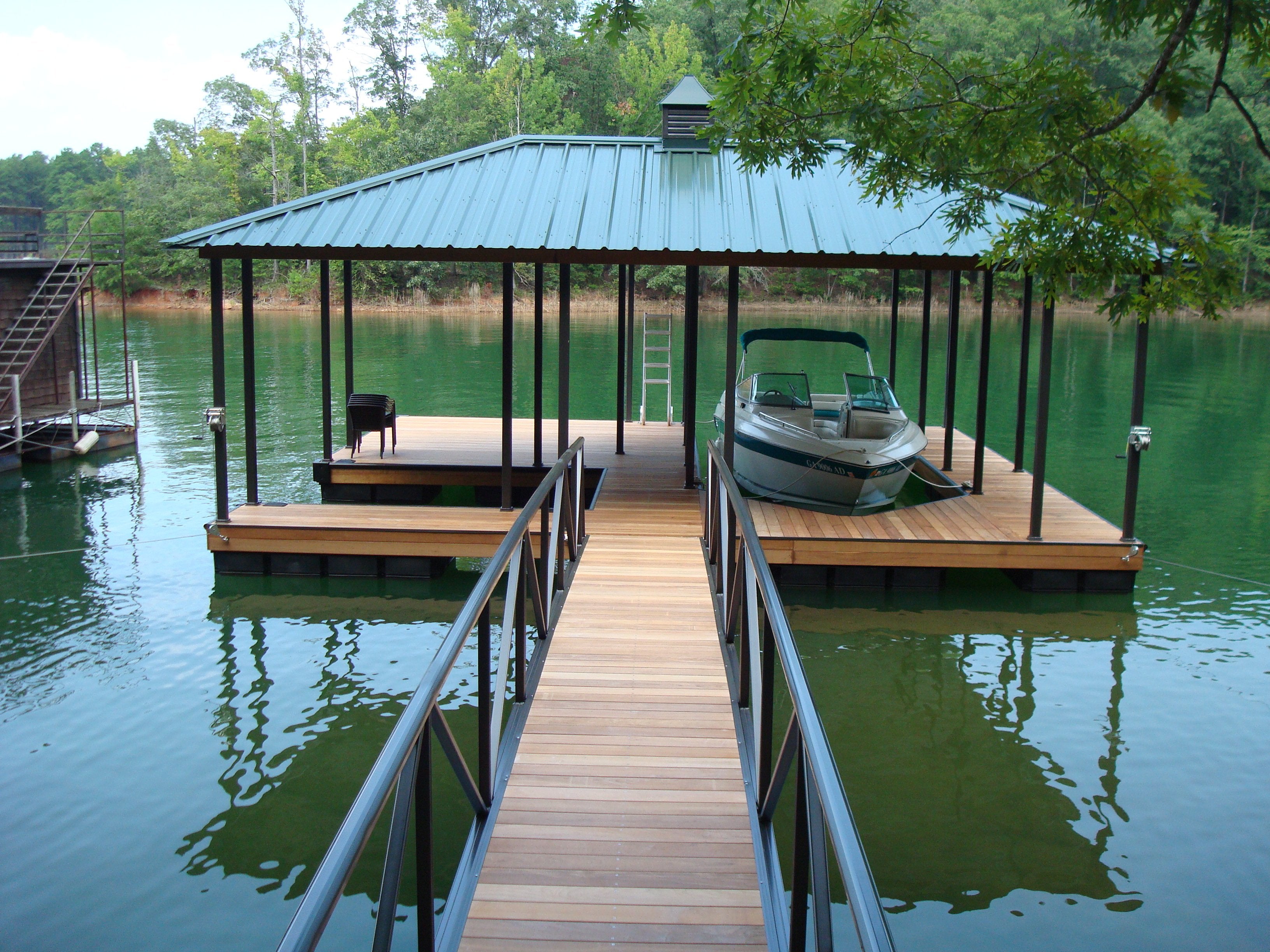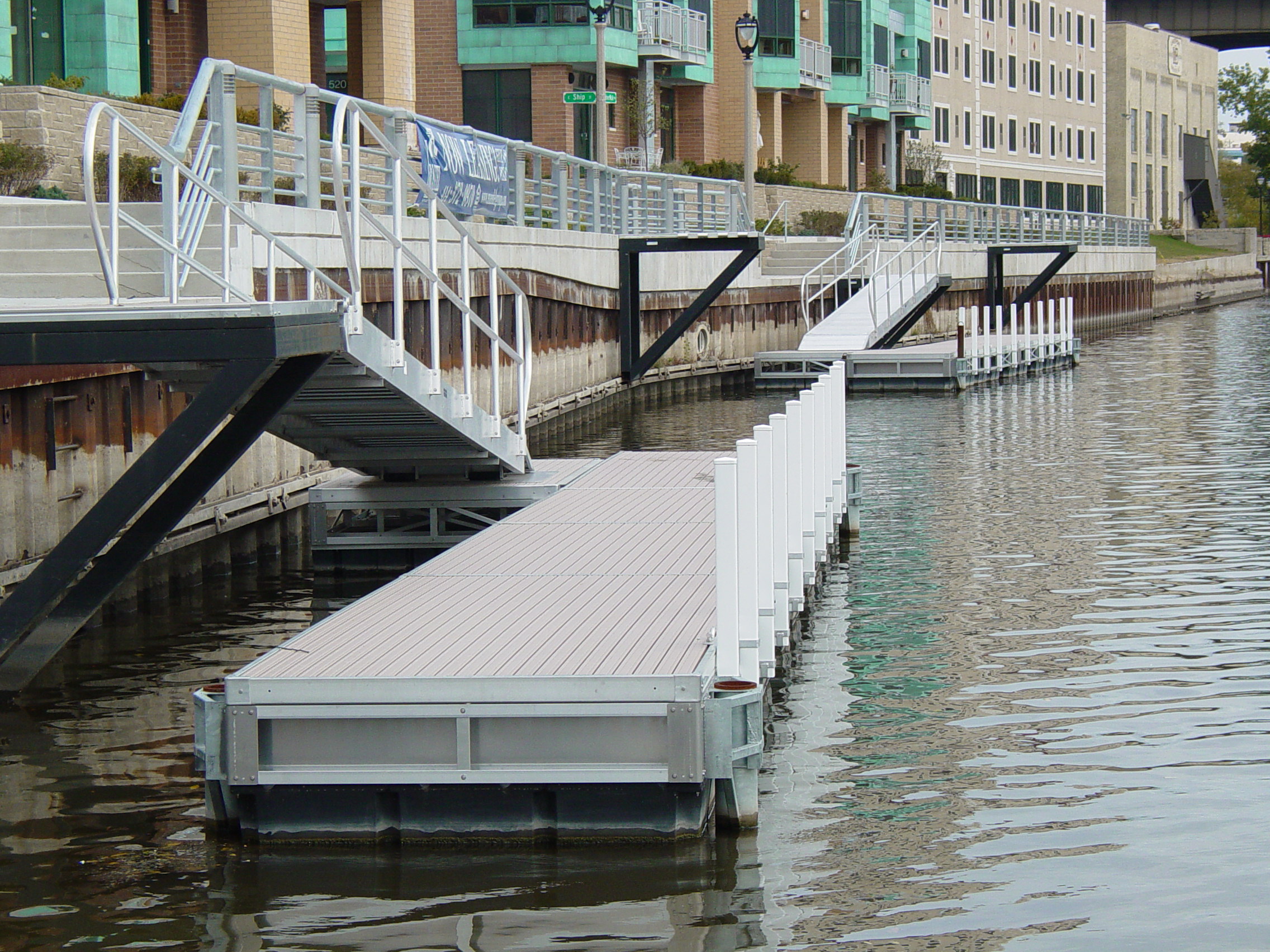Check out the Variety Of Floating Dock Solutions Designed to Suit Every Sailor's Requirements
Check out the Variety Of Floating Dock Solutions Designed to Suit Every Sailor's Requirements
Blog Article
Produce the Perfect Docking Remedy With Floating Docks
Floating docks present a flexible service for a variety of maritime demands, adjusting flawlessly to rising and fall water degrees and diverse vessel kinds. As we discover the necessary aspects that add to the effectiveness of floating docks, numerous vital factors concerning stability and upkeep will certainly emerge, elevating inquiries concerning exactly how to enhance your docking experience.

Advantages of Floating Docks
Floating docks deal countless advantages that make them an optimal option for numerous maritime applications. Unlike repaired docks, floating docks increase and fall with the trend, making certain consistent accessibility for vessels.
Furthermore, floating docks are commonly simpler and quicker to install contrasted to typical set structures. Their modular design permits uncomplicated setting up and disassembly, helping with maintenance and relocation when essential. This adaptability is specifically beneficial for short-lived applications or in settings where conditions may change.
Floating docks also often tend to be more eco pleasant, as they reduce disruption to the seabed and bordering marine ecological communities. Their buoyant nature reduces the threat of damages to marine life, advertising a healthier atmosphere. These docks can be tailored to accommodate various vessel dimensions, ensuring that they satisfy particular operational requirements.
Ultimately, the combination of flexibility, convenience of installation, and ecological factors to consider makes floating docks an extremely reliable solution for a vast array of maritime needs.
Choosing the Right Materials
Picking the appropriate products for floating docks is vital to guarantee resilience, security, and long life. The choice of materials directly affects the dock's performance in different ecological problems, consisting of direct exposure to water, sunshine, and prospective wear from aquatic web traffic.
Typical products utilized for floating docks include aluminum, wood, and high-density polyethylene (HDPE) Aluminum is light-weight, corrosion-resistant, and calls for marginal upkeep, making it an outstanding choice for long life. Nonetheless, its first price can be greater contrasted to other materials.
Wood, while aesthetically enticing and giving a traditional appearance, can be at risk to rot and bug damage if not properly dealt with. Consequently, making use of pressure-treated wood or naturally durable varieties like cedar or redwood can alleviate these problems.
HDPE is a prominent choice as a result of its resistance to UV rays and chemicals, in addition to being environmentally friendly. floating dock services. It is offered and lightweight in various shades, enabling customization
Inevitably, the ideal material selection will rely on particular requirements, consisting of budget, preferred aesthetic appeals, and environmental factors to consider. Careful analysis of these elements will certainly result in a resilient and successful floating dock service.
Layout Considerations for Security
When designing floating docks, ensuring security is a basic aspect that can dramatically affect their capability and safety. Stability in floating dock design is affected by different variables, including buoyancy, weight circulation, and the arrangement of components. An ideal buoyancy system need to utilize products that give enough lift while reducing weight. This balance makes certain that the dock stays above water, even under differing tons.
Weight distribution is critical; equally dispersing loads across the dock avoids turning and improves stability. This can be attained with tactical positioning of docking devices, such as fenders and cleats, in addition to correct spacing of drifts. Additionally, the measurements of the dock need to be attentively prepared. Wider layouts can supply boosted security, particularly in harsh water problems, while longer docks might require added assistances to stop drooping.
Another key factor to consider is the ecological impact, consisting of wave activity and wind. Incorporating attributes such as sidewalls or skirting can assist reduce the results of ecological forces, keeping stability in adverse problems. Eventually, a combination of thoughtful style, material option, and understanding of ecological factors will certainly produce a floating dock that satisfies both stability and safety and security demands.
Installment Tips and Methods

Next, secure the necessary permits and stick to local regulations, which may dictate setup techniques and environmental factors to consider. If required, involve a certified specialist experienced in floating dock installations. Usage high-grade products created for marine environments to boost sturdiness and durability.
When positioning the dock, straighten it alongside the shoreline to facilitate very easy gain access to. Guarantee that the anchoring system is robust, Find Out More using concrete blocks or helical supports to support the dock against wind and wave activity. It's important to account for seasonal water degree changes, including possible ice motion in colder environments.
During the installment, verify the dock's floatation and stability prior to completing the anchoring. Routinely evaluate the setup for any indications of wear or damage. By complying with these suggestions and strategies, you can accomplish a safe and secure, practical, and aesthetically pleasing floating dock installment that meets your demands.
Upkeep and Care Standards
Maintaining and caring for floating docks is critical to prolonging their lifespan and making sure risk-free use. Routine inspections need to be conducted to identify any type of indicators of wear, damages, or aquatic development. Look for cracks, loose fittings, or stained locations on the dock's surface area, as these concerns can endanger architectural honesty.
Cleansing is crucial. Make use of a stress washing machine to get rid of algae, barnacles, and particles, which can gather over time. For stubborn development, consider environmentally pleasant cleansing representatives that will not damage marine life.
In addition, examine the mooring lines and supports often to guarantee they are safe and secure and cost-free from deterioration. Change any type of frayed or damaged lines quickly to maintain security.
Throughout severe weather condition, such as storms or freezing conditions, take preventive procedures. Protect the dock with extra mooring lines and, if possible, remove any kind of removable elements to avoid damage.
Verdict
In verdict, the application of floating docks provides a flexible and efficient docking service ideal for numerous maritime applications. Their adaptability to wikipedia reference varying water levels, incorporated with a modular design, allows for very easy customization and moving. Choosing appropriate products improves both longevity and aesthetic charm, while mindful factor to consider of stability makes certain security and longevity. With correct installation and normal maintenance, floating docks can give trustworthy and effective docking experiences for a wide range of vessels.
As we discover the essential aspects that add to the effectiveness of floating docks, a number of vital elements relating to security and maintenance will emerge, elevating inquiries about exactly how to enhance your docking experience. Unlike dealt with docks, floating docks rise and autumn with the trend, guaranteeing regular ease of access for vessels.When making floating docks, making certain stability is a fundamental element that can dramatically affect their functionality and security. Stability in this hyperlink floating dock style is influenced by different aspects, consisting of buoyancy, weight circulation, and the setup of parts. Inevitably, a mix of thoughtful layout, product option, and understanding of ecological variables will certainly generate a drifting dock that satisfies both stability and security demands.
Report this page